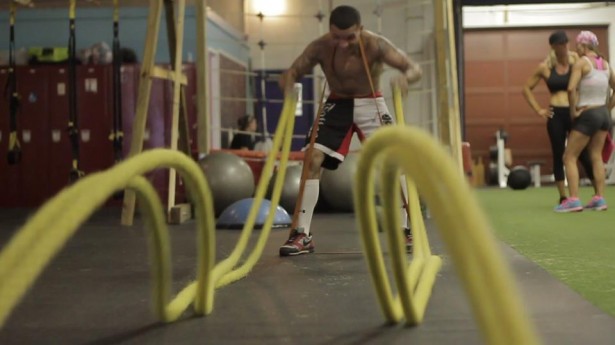So you’re thinking about diving into the world of battle ropes, huh? Good choice. They’ve been a go-to for athletes who crave a high-intensity, full-body workout, ever since former Navy SEAL Randy Hetrick introduced them back in the ’80s.
But don’t be intimidated; even if you’re a fitness newbie, battle ropes can offer a killer workout that doesn’t eat up a ton of your time.
Picture this: a thick, woven cable, often reaching up to 50 feet, with handles on each end to give you a good grip. That’s your battle rope.
You can use it for a bunch of different exercises, not just swings and slams. Want to focus on your upper body? Try rows or pull-ups. Lower body? You can do squats too. So go ahead, grab those ropes, and get ready for a workout that’s as versatile as you are.
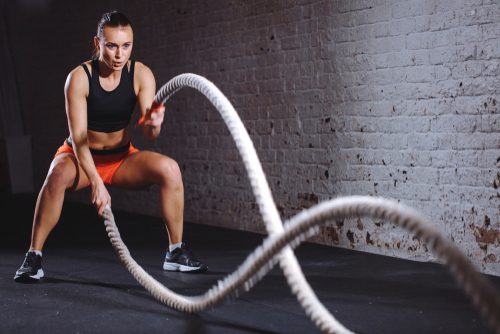
What Is Battle Rope Training?
Battle rope training is a form of high-intensity workout that involves thick, heavy ropes usually anchored to a wall or a sturdy post. The ropes can vary in length, commonly ranging from 30 to 50 feet, and they can be as thick as 1.5 to 2 inches in diameter. The basic premise is simple: you hold one end of each rope in your hands and produce waves, slams, or other patterns, using a variety of movements.
The movements you perform can target different muscle groups, including the arms, shoulders, back, and even legs. For example, alternating waves with each arm can engage the deltoids, biceps, and triceps, while full-body slams can bring your legs and core into the mix. The ropes offer a dynamic resistance that challenges your muscles in a unique way.
The workout can be incredibly taxing on your cardiovascular system, making it excellent for improving stamina and aerobic capacity. It also develops anaerobic fitness, which is useful for sports that require short bursts of energy. Plus, because it engages multiple muscle groups simultaneously, it’s a good option for burning calories and fat.
What sets battle rope training apart is its versatility. You can incorporate it into interval training, blend it with other forms of exercise, or focus solely on rope-specific movements. It’s also easy to adjust the intensity by modifying the speed, duration, and type of movement. Overall, it’s a solid choice for anyone looking to add a challenging, functional element to their fitness routine.
The benefits of using battle ropes include:
- High calorie burn – One 30 minute routine can burn 500+ calories. And since you are in constant motion, you keep burning calories long after the workout has finished.
- Easy on your joints – You don’t need to go to the gym for this workout because battle ropes are simple and effective enough to do anywhere.
- Functional movement – Many of us spend our days sitting in front of computers or driving in cars without moving much. Ethically using battle ropes helps stretch out tight muscles in different parts of your body while strengthening others all at once.
- Fun! – So many people experience a high from using battle ropes they end up adoring them even though they were initially intimidated by what look like heavy pieces of rope tied together with big knots.
So Let’s Get Started!
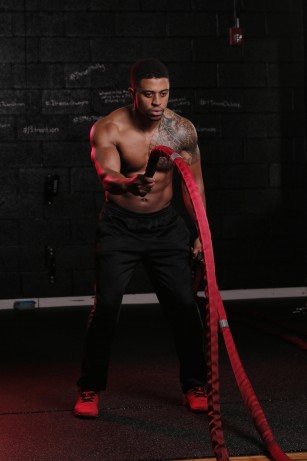 Get your ropes: There are two options for getting battle ropes; tying raw, loose ends of rope together or buying pre-tied ropes. Either way, work equally well and the choice is ultimately yours. For those new to fitness products such as these can be expensive so if you aren’t sure whether you’ll like it or continue using it, opt for a cheaper version which you can easily replace if it’s not ideal.
Get your ropes: There are two options for getting battle ropes; tying raw, loose ends of rope together or buying pre-tied ropes. Either way, work equally well and the choice is ultimately yours. For those new to fitness products such as these can be expensive so if you aren’t sure whether you’ll like it or continue using it, opt for a cheaper version which you can easily replace if it’s not ideal.
Get your hands on some towels – You will need something to protect your hands from rope burn when doing slams and lifts with them so having a few towels around will come in handy.
Find a workout space: Find a space that is clear of furniture and other heavy objects that might get tipped over during use (if you are at home). Then have a go at it!
The Workout: A beginner’s battle ropes workout will usually consist of the following exercises, but feel free to add your own twist or remove a few if you need to. The most important thing is that you have fun and push yourself in every exercise.
Warm-up: Don’t forget to get warmed up before doing battle ropes.
Let’s Begin!
When starting ropes for the first time begin with 30 seconds of work and 20 seconds rest, 5 times. If your intermediate I would suggest a setup like Tabata (eight 20 second rounds, each followed by 10 seconds of rest). For those of you that have been in the rope game for a while try a 3 to 1 ratio e.g. 1 minute round with 20 seconds rest, 5 times. There are so many combinations you can use.
Below are some of the most common Battle Rope Movements:
Battle Ropes Movement 1 – Two-handed slams aka ‘Hulk Smashes’
These need to be done at a slower pace due to their longer range of motion. The focus behind these is just pure raw power. When doing these you want to keep the ropes just inside shoulder width then raise them above eye level and “slam” them down while squatting down slightly and hinging at the waist as the ropes hit the ground and repeat. The goal of these is to target your explosive energy system while hitting your abs and core.
Battle Ropes Movement 2 – Alternating waves aka ‘Machine gun Kelly’s’
This is the most common way of doing the battling ropes. Holding the end of the ropes literate waving the ropes one arm at a time. These are all about speed hence the nickname ‘Machine Guns” the goal is to create as many waves as you can in the time you’re doing a set for. I like to use these after working front delta as the movement focuses on them. These are also great if you want to help tone the delts without direct impact or trauma in the case of boxing.
Battle Ropes Movement 3 – Double Dutch aka ‘Tornadoes’
These bad boys call for you to wave your arms in large circles for speed. Your right arm will move clockwise and your left arm will move counterclockwise. Two things will begin to happen the rope will show ‘spirals ‘or ‘loops’ moving toward the point of anchor this is normal so don’t panic. I like this movement because of the added ancillary work for the smaller external rotators of the shoulder.
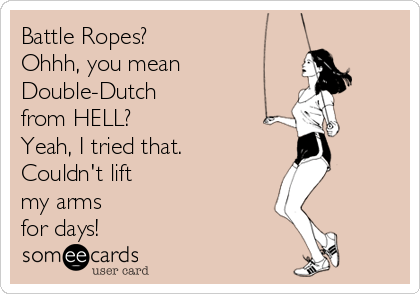
Battle Ropes Movement 4 – Lateral Waves aka ‘Tsunamis’
We can’t have a complete list without hitting the rear delts. Lateral waves place a great amount of tension on them. Hold the ropes out straight in front of you at shoulder height, bend your knees and clap your arms together. The effect is even more drastic when you drive your elbows back on each rep. Keep your chest ups as you whip the rope forward and back. Make sure you use a full range of motion on each wave while making sure the ropes do not overlap.
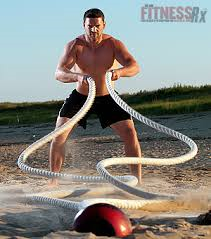
Battle Ropes Movement 5 – Rope Jack aka ‘Jack Hammers’
Think jumping jack except your holding the ropes with your palms facing in. These can be done in two ways; the first is facing the anchor point of the ropes to work the front delt. The second is facing away from the ropes while holding them and doing a jack facing away from the anchor point for the rear delt. I personally have my clients alternate between the two to help create balance. When doing the jumping jack make sure that ropes do not cross at the top of the movement.
Wrap Up
Conclusion paragraph: By now, you should be ready to start your own battle ropes workouts. The exercises we’ve outlined for beginners are a great way to get started and just might have been the motivation you needed to take on this new fitness regimen. Now that you know what it feels like to build up some sweat equity with these quick-paced workouts, go ahead and give them a try at home or in the gym! Remember – consistency is key when working out so make sure to show up every day if possible. If not, don’t worry – there’s always tomorrow!
Wayne Mutata

Wayne Mutata is a Certified USA Weightlifting Coach, Nike SPARQ Combine Trainer, and recognized supplement specialist with over a decade of professional experience. He holds a Master’s degree in Physiology and Anatomy, along with double minors in Dietary Nutrition and Exercise Science from the National Personal Training Institute of Philadelphia.
Wayne is a sought-after Strength and Conditioning expert, working with professional athletes including MMA fighters and elite Figure/Bikini competitors. His training methods are grounded in science and tailored for peak performance. Beyond coaching, Wayne has built a public profile as a fitness model and on-camera fitness personality, appearing on the cover of Fitness101 magazine and earning a nomination in the Men’s Health Ultimate Guy competition.
As the founder of Itrainwithwayne, he delivers custom workout programs, supplement protocols, and online training to clients across the United States and internationally. The Itrainwithwayne brand operates two training studios, the headquarters in Lancaster, PA, and a second location in Philadelphia, PA.

